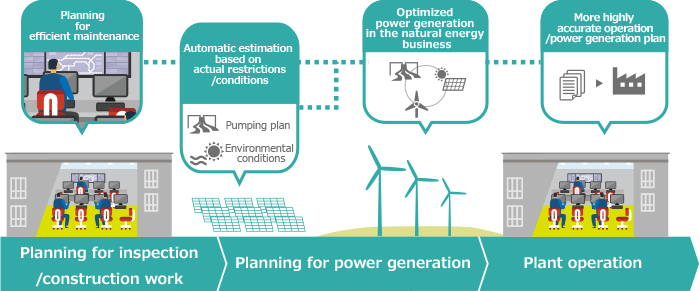Sustainable Power: Embracing Renewable Energy Solutions

Introduction: The Imperative of Renewable Energy Solutions
In the face of environmental challenges and the growing need for sustainable practices, renewable energy solutions have emerged as a crucial avenue for meeting our energy needs while minimizing ecological impact. This article delves into the various aspects of renewable energy solutions and their transformative potential.
Harnessing Solar Power: A Beacon of Sustainability
Solar energy stands out as a beacon of sustainability within the realm of renewable energy solutions. The utilization of solar panels to harness the power of the sun is a rapidly advancing technology. These panels convert sunlight into electricity, providing a clean and abundant source of energy. Solar power not only reduces reliance on traditional energy sources but also contributes to a significant reduction in carbon emissions.
Wind Energy: Capturing the Power of the Breeze
Wind energy, another formidable player in the realm of renewable solutions, harnesses the kinetic energy of the wind to generate electricity. Wind turbines, strategically positioned in windy locations, convert the rotational energy of the blades into electrical power. This clean and renewable source of energy has gained widespread acceptance as an environmentally friendly alternative, making significant strides in global energy production.
Hydroelectric Power: Tapping into Water’s Potential
Hydropower, a well-established form of renewable energy, harnesses the power of flowing water to generate electricity. Dams and other water infrastructure are strategically constructed to capture the energy inherent in water’s movement. Hydropower not only provides a consistent and reliable energy source but also plays a vital role in water resource management and flood control.
Geothermal Energy: Unleashing Earth’s Inner Heat
Geothermal energy taps into the Earth’s internal heat, utilizing steam and hot water reservoirs beneath the surface to generate electricity. This renewable source offers a consistent and reliable energy supply with minimal environmental impact. Geothermal power plants produce electricity with high efficiency, contributing to the diversification of the energy mix and reducing dependence on fossil fuels.
Bioenergy: Harnessing Nature’s Recycling Process
Bioenergy encompasses a variety of renewable energy solutions derived from organic materials. Biomass, such as wood, agricultural residues, and organic waste, can be converted into biofuels, providing a sustainable alternative to traditional fuels. Bioenergy not only offers a means of waste reduction but also plays a crucial role in mitigating greenhouse gas emissions.
Advancements in Energy Storage: Overcoming Intermittency Challenges
While renewable energy sources like solar and wind are abundant, their intermittent nature poses challenges for consistent power supply. Energy storage technologies, such as advanced batteries, are instrumental in overcoming this intermittency. These solutions store excess energy generated during peak times and release it during periods of high demand, ensuring a stable and reliable power supply.
Smart Grids: Enhancing Energy Efficiency and Distribution
The integration of smart grids represents a pivotal advancement in renewable energy infrastructure. These intelligent grids leverage digital technology to enhance energy efficiency, monitor demand, and optimize the distribution of electricity. Smart grids play a crucial role in facilitating the integration of renewable energy sources into existing power systems, creating a more resilient and responsive energy network.
Government Incentives and Policies: Catalyzing Renewable Adoption
Government incentives and policies play a pivotal role in accelerating the adoption of renewable energy solutions. Subsidies, tax credits, and regulatory frameworks incentivize individuals and businesses to invest in sustainable energy practices. These supportive measures not only spur economic growth in the renewable sector but also contribute to a broader shift toward a greener and more sustainable energy landscape.
Environmental and Economic Benefits: A Dual Advantage
The adoption of renewable energy solutions offers a dual advantage by simultaneously addressing environmental concerns and fostering economic growth. By reducing reliance on finite fossil fuels, these solutions contribute to mitigating climate change and lowering greenhouse gas emissions. Simultaneously, the renewable energy sector generates job opportunities, stimulates innovation, and promotes economic resilience.
Conclusion: A Sustainable Energy Future Beckons
In conclusion, the journey towards a sustainable energy future hinges on the widespread adoption of renewable energy solutions. From solar and wind power to hydropower, geothermal energy, and bioenergy, the diverse array of renewable sources presents a promising path forward. As advancements continue and governments worldwide commit to sustainable practices, the potential for a cleaner, greener, and more sustainable energy landscape becomes increasingly within reach.
Explore more about Renewable Energy Solutions at jetdesignhome.my.id.









